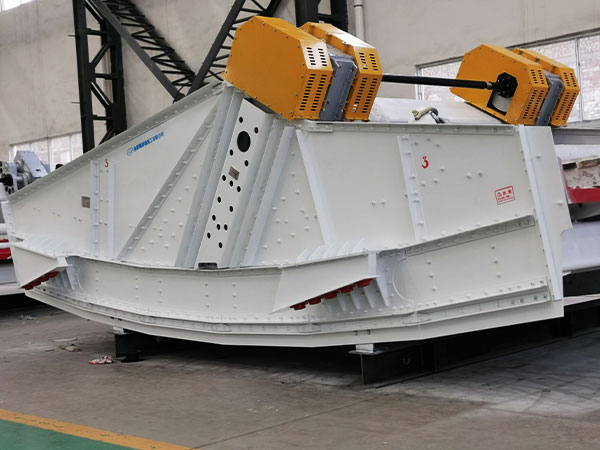What are the differences between banana vibrating screen and linear vibrating screen?
Banana vibrating screens and linear vibrating screens are both types of vibratory screens used for separating and classifying materials, but they differ significantly in design, operation, and application.
The difference between banana vibrating screen and linear vibrating screen

Banana Vibrating Screen
Design and Structure
Shape: Named for their distinctive shape, banana screens have multiple decks with different angles of inclination, resembling the shape of a banana.
Deck Configuration: Typically, the screen decks start at a steeper angle and then flatten out toward the discharge end. This design allows for a higher feed rate and greater efficiency in handling large volumes of material.
Operation
Vibration Mechanism: Uses a combination of circular and linear vibrations to move materials along the screen surface.
Flow Characteristics: The changing angle of inclination helps maintain a higher material flow rate, allowing for better separation efficiency and higher throughput.
Screening Efficiency: Higher due to the variable deck angles, which optimize the screening process for different material sizes.
Applications
Large-Scale Operations: Ideal for high-capacity screening applications in industries such as mining, mineral processing, and coal preparation.
Diverse Material Handling: Suitable for screening a wide range of materials from fine particles to large rocks.
Linear Vibrating Screen

Design and Structure
Shape: Linear screens have a more straightforward rectangular or square design.
Deck Configuration: Generally consists of a single or multiple flat, horizontal decks.
Operation
Vibration Mechanism: Operates using linear vibrations generated by one or more vibrating motors. These vibrations move materials along a straight path on the screen surface.
Flow Characteristics: Materials move in a straight line from the feed end to the discharge end, which is ideal for applications requiring precise separation of materials.
Screening Efficiency: While effective, the efficiency may not match that of banana screens in handling large volumes of material quickly.
Applications
Medium to Small-Scale Operations: Suitable for medium and small-scale screening operations across various industries, including food processing, pharmaceuticals, chemicals, and construction.
Precise Screening Needs: Ideal for applications requiring precise classification and separation of materials, such as in recycling or fine material screening.
Key Differences Summarized
Design and Structure:
Banana Screen: Curved, multi-angled decks.
Linear Screen: Straight, flat decks.
Vibration Mechanism
Banana Screen: Combination of circular and linear vibrations.
Linear Screen: Linear vibrations only.
Material Flow
Banana Screen: Variable angles promote higher flow rates and efficient separation.
Linear Screen: Straight-line flow for precise material separation.

Screening Efficiency
Banana Screen: Higher efficiency due to the varying deck angles.
Linear Screen: Good efficiency, but generally lower than banana screens for high-volume applications.
Applications
Banana Screen: Large-scale operations, high-capacity material handling.
Linear Screen: Medium to small-scale operations, precise screening needs.
Conclusion
Both banana vibrating screens and linear vibrating screens have their unique advantages and are suited to different applications. Banana screens are ideal for high-capacity, large-scale operations where efficiency and throughput are crucial. In contrast, linear screens are more suitable for applications requiring precise separation and classification of materials, particularly in medium and small-scale operations. Choosing the right type of screen depends on the specific requirements of the operation, including material characteristics, desired throughput, and space constraints.


